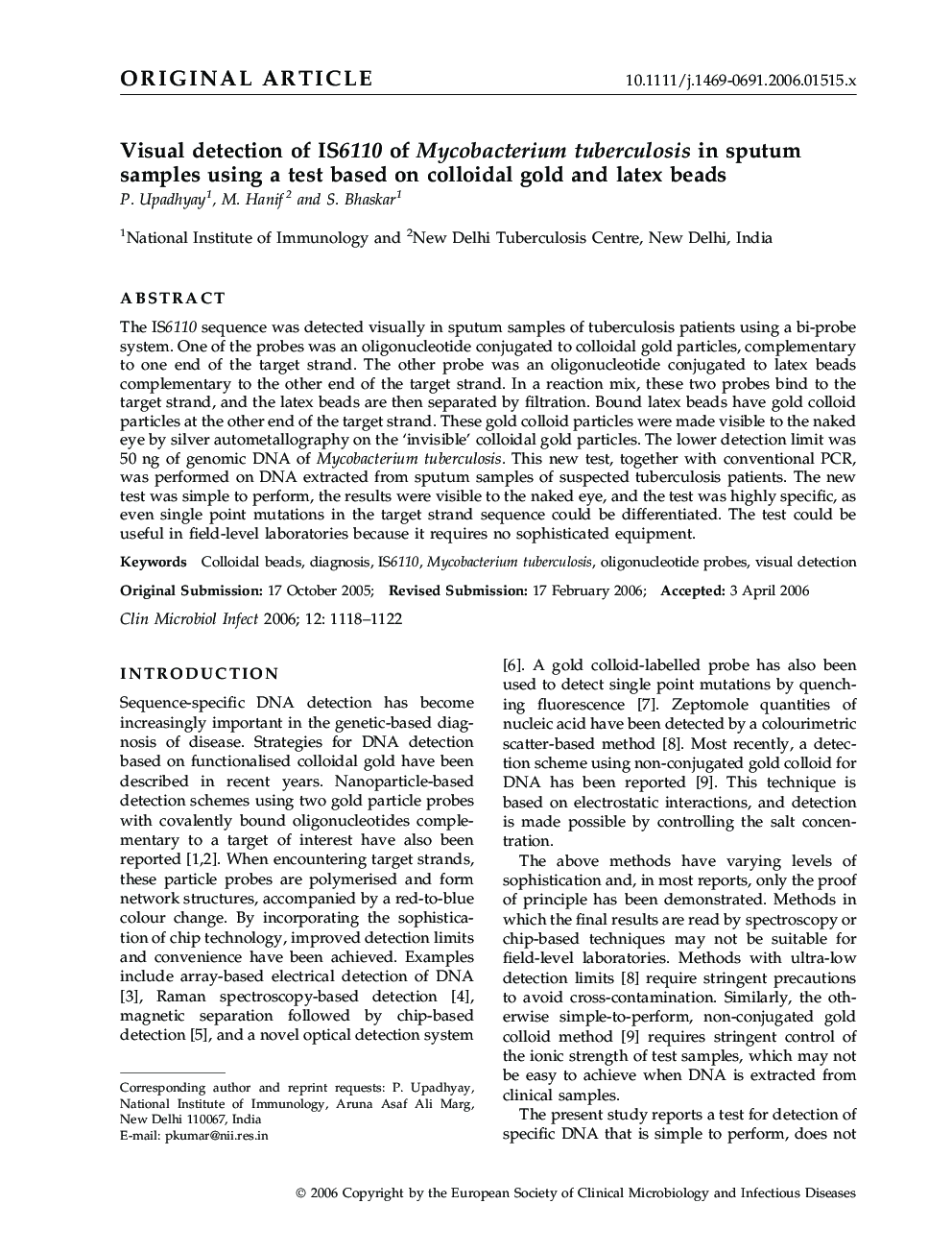| کد مقاله | کد نشریه | سال انتشار | مقاله انگلیسی | نسخه تمام متن |
|---|---|---|---|---|
| 3398803 | 1222332 | 2006 | 5 صفحه PDF | دانلود رایگان |

ABSTRACTThe IS6110 sequence was detected visually in sputum samples of tuberculosis patients using a bi-probe system. One of the probes was an oligonucleotide conjugated to colloidal gold particles, complementary to one end of the target strand. The other probe was an oligonucleotide conjugated to latex beads complementary to the other end of the target strand. In a reaction mix, these two probes bind to the target strand, and the latex beads are then separated by filtration. Bound latex beads have gold colloid particles at the other end of the target strand. These gold colloid particles were made visible to the naked eye by silver autometallography on the ‘invisible' colloidal gold particles. The lower detection limit was 50 ng of genomic DNA of Mycobacterium tuberculosis. This new test, together with conventional PCR, was performed on DNA extracted from sputum samples of suspected tuberculosis patients. The new test was simple to perform, the results were visible to the naked eye, and the test was highly specific, as even single point mutations in the target strand sequence could be differentiated. The test could be useful in field-level laboratories because it requires no sophisticated equipment.
Journal: Clinical Microbiology and Infection - Volume 12, Issue 11, November 2006, Pages 1118–1122